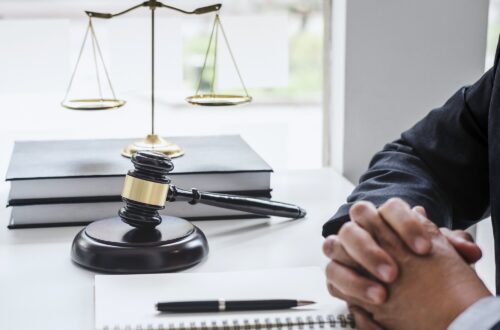Child pornography is a heinous crime that has severe repercussions in Washington. With the digital age making it easier for offenders to access and distribute illicit material, understanding the state’s regulations is crucial for protecting the innocent and combating this form of exploitation. This blog post delves into the complexities of Washington’s child pornography laws, federal implications, and the challenges of prosecuting such cases in the digital age, as well as the broader context of pornography laws Washington.
Contents
Key Takeaways
- Washington’s child pornography laws are in place to protect minors from exploitation, with severe penalties for possession and viewing offenses.
- Federal charges related to child pornography may result in substantial mandatory sentences and long-term negative social/employment implications.
- Legal defenses can be employed to challenge digital evidence presented in these cases, but the First Amendment provides no protection for such activities.
Understanding Washington’s Child Pornography Laws

Washington’s child pornography laws aim to protect minors from sexual exploitation by criminalizing the possession and viewing of such material. Defined as visual or printed material depicting a minor engaged in sexually explicit conduct, child pornography offenses are categorized into first and second degrees, with varying penalties for each. In order to better understand the implications and consequences of these offenses, it is crucial to familiarize oneself with Washington child pornography laws.
Offenders face severe consequences, including imprisonment, community custody, and mandatory registration as a sex offender, all of which are forms of criminal penalty.
Definition of Child Pornography
Under Washington law, child pornography is defined as any visual or printed matter depicting a minor engaging in sexually explicit conduct, which includes images, videos, and other forms of media that show minors in explicit sexual situations. Unlike adult pornography, child pornography involves the sexual exploitation of minors, marking a distinct difference between the two.
Sexually explicit material, according to Washington law, refers to pictorial material displaying:
- Direct physical stimulation of unclothed genitals, which can be considered as sexual stimulation
- Masturbation
- Sodomy
- Flagellation
- Torture in the context of a sexual relationship
- Emphasizing the depiction of adult human genitals.
Possession and Viewing Offenses
Washington law classifies possession and viewing offenses into first and second degrees. First-degree material involves minors engaged in first degree possession, which includes:
- genital penetration
- oral sex
- anal sex
- masturbation
- other similar acts.
Second-degree child pornography includes depictions of genitals, rectal areas, or breasts in an explicitly sexual manner, as well as physical contact with a minor’s private areas, regardless of clothing and whether it involves individuals of the same or opposite sex. This is why promoting pornography, especially when it involves child pornography, is strictly prohibited and punishable by law.
If convicted of second-degree possession of child pornography in Washington, offenders could face three to nine months in county jail, up to five years in prison for multiple counts, and one year of community custody. Such penalties illustrate the seriousness of child pornography crimes and Washington’s dedication to safeguarding minors from exploitation.
Penalties for Possession and Viewing
In Washington, the penalties for possession and viewing offenses can be severe, with consequences including incarceration, supervised release, and mandatory registration as a sex offender. The duration of imprisonment for possession and viewing offenses varies based on the specifics of the case. Penalties can range from 24 hours to 90 days in jail for possession of one ounce to 40 grams, and escalate to five years in jail for possession exceeding 40 grams.
A second-degree viewing offence has a prison term of one year as well as a year under community custody. The maximum penalty for this charge is two years.
Federal Charges and Their Implications

On top of state and local charges, federal charges for child pornography may arise due to electronic connections or mail. These charges carry mandatory sentences and additional penalties.
Federal law defines child pornography as any visual depiction of sexually explicit conduct involving a minor, with severe legal repercussions if found guilty.
Electronic Connection and Mail
Electronic connections and mail can lead to federal charges for child pornography offenses. The use of the internet or electronic devices to transmit, distribute, or possess visual depictions of sexually explicit conduct involving a minor constitutes an electronic connection in child pornography laws.
Mail plays a role in child pornography offenses when the U.S. Postal Service investigates crimes involving the transport or distribution of child pornography through the mail system.
Mandatory Sentences
Mandatory sentences for federal child pornography charges can result in lengthy prison terms. The minimum mandatory sentence is five years, while the maximum is 30 years.
Factors such as the severity of the crime, the nature and extent of the child pornography involved, and the defendant’s criminal history can influence the severity of sentencing.
The digital age has introduced new challenges for prosecuting child pornography cases. With the increasing prevalence of malware and hackers, proving possession of child pornography can be complicated.
Law enforcement tackles these challenges by employing sting operations, device searches, and gathering digital evidence to build substantial cases.
Sting Operations and Device Searches
In child pornography cases, sting operations and device searches are common methods used to gather evidence. Sting operations may involve internet-based operations, undercover officers, online chat rooms and forums, covert surveillance, and controlled purchases.
On the other hand, device searches involve law enforcement obtaining a search warrant and seizing electronic devices. These devices can be computers, phones, and tablets to search for evidence of child pornography.
The Role of Malware and Hackers
Malware and hackers can lead to innocent individuals being charged with possession or viewing of child pornography. Malicious software and individuals can utilize technology to gain access to systems or devices without authorization, potentially planting illicit material on unsuspecting individuals’ devices.
These factors can add complexity to the process of proving possession in child pornography cases, underlining the importance for defendants to obtain expert assistance when contesting digital evidence.
Legal Defenses and Strategies

For those facing child pornography charges, legal defenses and strategies are available to challenge the evidence against them and potentially prove their innocence.
Proving possession and challenging digital evidence are two key strategies that can help defend against child pornography charges.
Proving Possession
It can be challenging to prove possession, as it can be obtained unknowingly through malware or malicious links. To establish possession, the prosecutor must demonstrate that the individual had knowledge, dominion, and control over the materials depicting minors engaged in sexually explicit conduct.
Presenting evidence such as harmless search terms or a shared folder with contents downloaded unknowingly could assist in disproving possession.
Challenging Digital Evidence
Challenging digital evidence can help defend against child pornography charges, especially if the material was placed by hackers or malware. Computer forensic experts and digital evidence experts can be employed as expert witnesses to dispute digital evidence in child pornography cases.
The credibility of digital evidence in a court of law is assessed based on the following factors:
- The qualifications and competence of the individuals presenting the evidence
- The methodology used to obtain and analyze the evidence
- The reliability and integrity of the technology and tools used in the process
Consequences of Conviction
A child pornography conviction, often considered a class b felony, can have lifelong consequences, including registration as a sex offender and negative social and employment implications. In some jurisdictions, a lesser offense related to child pornography may be classified as a class c felony, but the consequences can still be severe.
Grasping the legal implications and available defenses is vital for individuals charged with child pornography offenses.
Lifelong Registration

Lifelong registration as a sex offender can result from a child pornography conviction in Washington. Registered sex offenders must register within three business days of their release with the county sheriff for their residence or the county of their school, place of employment, or vocation if they are not a resident of Washington.
Depending on the offender’s criminal record and subsequent conduct, they may be able to petition the court for exemption from the requirement to register as a sex offender.
Social and Employment Implications
The social and employment implications of a child pornography conviction can be severe and long-lasting. A conviction can have a profoundly detrimental effect on employment opportunities in Washington, as employers are legally permitted to inquire about convictions and factor them into hiring decisions.
A child pornography conviction can also impact a person’s professional license, and certain jobs may be barred to individuals with such a conviction. Furthermore, termination of employment is a potential consequence of a child pornography conviction in Washington.
First Amendment and Free Speech Considerations
Child pornography is not protected under the First Amendment, as it is considered harmful and exploitative. The Supreme Court has determined that child pornography is an unprotected category of sexual expression, similar to obscenity, and it is illegal to possess, distribute, or view child pornography.
Worth mentioning is that the First Amendment offers no protection for any form of child exploitation,
Summary
In conclusion, Washington’s child pornography laws are stringent, reflecting the state’s commitment to protecting minors from sexual exploitation. Individuals charged with possession or viewing of child pornography face severe consequences, but legal defenses and strategies are available to challenge the evidence against them. The digital age has introduced new challenges for prosecuting such cases, but understanding the law and the potential defenses can help ensure justice is served.
Frequently Asked Questions
What is the obscenity law in Washington state?
In Washington State, it is illegal to make any open and obscene exposure of oneself or another person that may cause reasonable affront or alarm. This falls under the state’s indecent exposure law.
What is the definition of child pornography under Washington law?
Under Washington law, child pornography is defined as any visual or printed material depicting a minor engaging in sexually explicit conduct. This includes images, videos, and other forms of media that show minors in explicit sexual situations.
What are the penalties for possession and viewing of child pornography in Washington?
In Washington, penalties for possession and viewing of child pornography can include imprisonment, community custody, and mandatory registration as a sex offender.
How do sting operations and device searches work in child pornography cases?
Sting operations and device searches are two important techniques used in child pornography cases. The former involves undercover officers, online chat rooms and internet-based operations, while the latter involves law enforcement obtaining a search warrant and seizing electronic devices, such as computers, phones, and tablets to search for evidence.
What legal defenses are available for those charged with possession or viewing of child pornography?
Those charged with possession or viewing of child pornography may be able to prove their innocence through digital evidence or challenging the possession charge itself.






